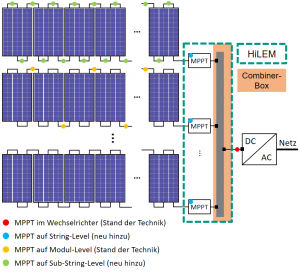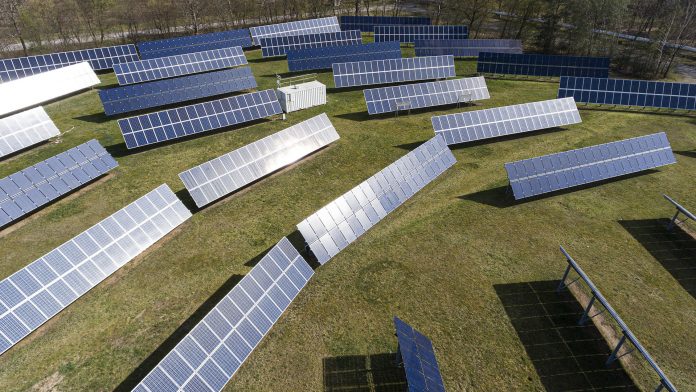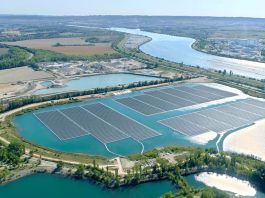The Karlsruhe Institute of Technology (KIT) has launched the Solar Park 2.0 project to enhance the efficiency and harness the full potential of photovoltaic systems.
The yield of large photovoltaic systems is significantly inhibited by shade, dirt, and ageing. The Solar Park 2.0 project aims to overcome these challenges, pioneering novel circuits, innovative power electronics, and AI-supported optimisation to boost yields and service life of the technology, in addition to reducing operating costs.
Solar Park 2.0 has received €2.5 million from the Federal Ministry for Economic Affairs and Climate Action (BMWK).
What are the challenges facing the solar energy industry?
In order for the planet to substantially reduce damaging carbon emissions to achieve climate neutrality, upscaling the use of renewable energy sources will be vital. Solar energy provides a promising and powerful option, although limitations persist with photovoltaic systems.
Nina Munzke, a researcher at KIT’s Institute of Electrical Engineering (ETI), who initiated the Solar Park 2.0 project, explained: “Large solar parks are very important; however, it is a problem to find larger areas for such facilities in the densely populated regions of the world. To reach our climate goals, available areas must be used far more efficiently.
“We want to increase the power output of photovoltaics under unfavourable conditions, such as shade, dirt, or ageing, and to optimise the efficiency and power yield.”
For photovoltaic systems to reach optimal efficiency, they need to work close to their maximum power point (MPP).
Lukas Stefanski of ETI commented: “The output of the module results from the current multiplied by the voltage level. At the MPP, the output is highest, meaning that the maximum possible yield is reached.”
The drawback is that MPP is affected by temperature, the Sun’s position, and other factors. This means that optimum operation requires the voltage to be continuously adjusted, which is performed by specialised power optimisers. Nevertheless, maximum power point tracking (MPPT) in traditional photovoltaic systems predominantly takes place in the central inverter.
Stefanski said: “When several photovoltaic modules are connected in series or strings, and several strings are connected in parallel, shading and failures of single modules reduce the power produced by the whole facility. It is more advantageous to control single modules and to optimise the voltage applied to the strings depending on the specific circuitry.”
How Solar Park 2.0 will enhance photovoltaic systems
To overcome these issues, the Solar Park 2.0 project will be equipped with KIT’s HiLEM (High Efficiency Low Effort MPPT) circuit, which replaces the combiner boxes usually applied for the parallel connection of strings, enabling an efficient MPPT on the string level. Amalgamating a HiLEM circuit with new power optimisers allows for MPPT on the string and module levels.
“This does not only increase the yield of the photovoltaic facility but also the service life. At the same time, operation costs are reduced,” Stefanski said.
The novel components will be examined in two photovoltaic systems of 30 kilowatt-peak (kWp) each. One of the test facilities will perform test scenarios for the new power optimisers. The second will be used as a reference. The systems will be set up next to each other in a free area of the existing solar park of KIT’s Energy Lab 2.0.

The project will also design an AI-supported method to predict the power production of photovoltaic systems based on operation data, allowing the team to identify shaded, damaged, or dirty modules. The AI will be trained with long-term data from the existing solar park of Energy Lab 2.0 and data collected by the wireless monitoring system.
Markus Becker from ETI concluded: “This will help us find out at which point of solar parks installation of power optimisers would be worthwhile.”









